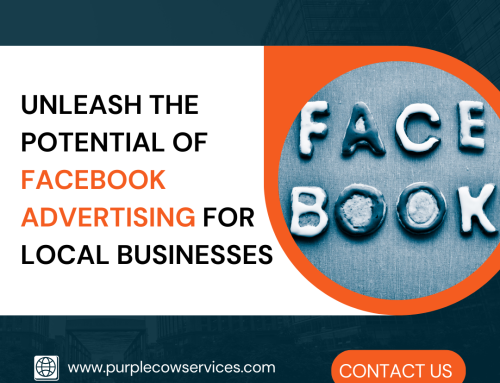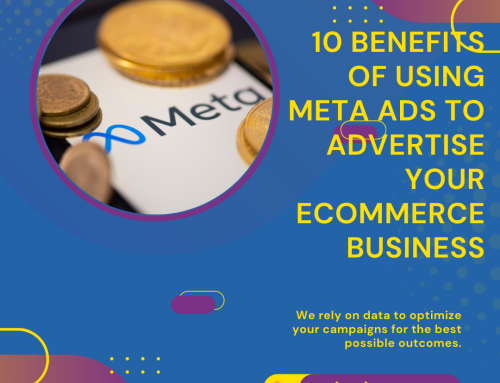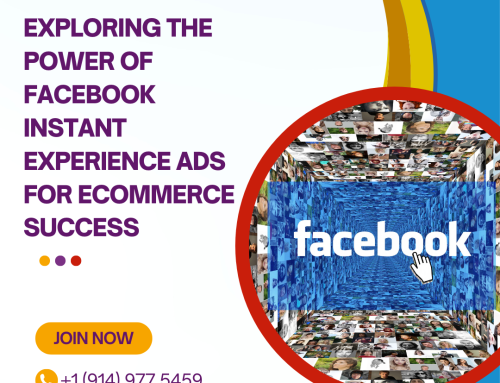In the ever-evolving realm of digital marketing, gaining a competitive edge is not just a strategic advantage; it's often the key to success. One powerful method to achieve this advantage is by dissecting and understanding your competitors' Facebook ads.
Share This Story, Choose Your Platform!
By gaining insights into their strategies and tactics, you can fine-tune your own campaigns, maximize your ROI, and ultimately outperform your rivals. In this comprehensive guide, we will delve deep into the art of analyzing your competitors’ Facebook ads and provide you with a step-by-step roadmap to gain the upper hand in the fiercely competitive landscape of online advertising.
Why Analyze Competitor’s Facebook Ads?
Before we dive into the how, let’s first explore the why. Understanding the motivations and benefits behind analyzing competitor’s Facebook ads is crucial to setting the right mindset.
Stay Ahead of the Curve: Your competitors are also vying for the same audience’s attention. By analyzing their strategies, you can identify trends and tactics that are currently working in your industry.
Cost-Efficiency: Learning from your competitors’ mistakes and successes can save you both time and money. You can avoid costly missteps and allocate your budget more effectively.
Inspiration for Creativity: Studying successful ads can inspire your own creativity. You can adapt and refine strategies that have proven to be effective for others.
Audience Insight: By understanding your competitors’ targeting and messaging, you can gain insights into your shared audience. This knowledge can help you tailor your campaigns more effectively.
Benchmarking: Competitor analysis provides a benchmark against which you can measure your own performance. Are your click-through rates (CTR) or conversion rates on par with or better than your rivals?
How to Analyze Competitor’s Facebook Ads?
Identify Your Competitors
The first step in analyzing competitor’s Facebook ads is identifying who your competitors are. These are businesses that offer similar products or services to your own and are targeting the same or a similar audience. You can use various tools and methods for competitor identification:
Google Search: Start with a simple Google search using relevant keywords. Note the businesses that appear in the search results.
Industry Directories: Industry-specific directories or associations often list businesses in your niche.
Social Media: Check social media platforms, including Facebook itself, to identify businesses that are active in your industry.
Competitor Analysis Tools: There are tools like SEMrush, Ahrefs, and SimilarWeb that can help you identify online competitors and their advertising efforts.
Create a comprehensive list of your competitors, both direct and indirect, to analyze their Facebook ads effectively.
Utilize Facebook Ad Library
Facebook offers a valuable tool known as the “Facebook Ad Library.” This tool allows you to search for ads by advertisers’ names, keywords, or topics. It provides a wealth of information about the ads, including the ad creatives, ad copy, and the landing pages they link to.
How to use the Facebook Ad Library Effectively
Enter Competitors’ Names: Start by entering the names of your competitors into the search bar. This will display all the ads they are currently running on Facebook and Instagram.
Explore Ad Creatives: Examine the images or videos used in their ads. Are they utilizing user-generated content, stock photos, or custom graphics? Take note of what seems to resonate with their audience visually.
Decipher Ad Copy: Dive deep into the text accompanying the ads. What messaging and value propositions are they using? Identify recurring keywords and phrases.
Explore Landing Pages: Click on the ads to explore the landing pages. Assess the design, content, and the effectiveness of their call-to-action (CTA). Consider the overall user experience and how it compares to your own website.
Visual Component Analysis
Visual elements play a crucial role in the effectiveness of Facebook ads. Visual content is often the first point of contact with an audience. Here are some aspects to consider when analyzing the visual components of your competitors’ ads:
Image or Video: What type of visual content are they using – images or videos? Determine which format is more prevalent and seems to engage their audience better.
Design Style: Analyze the design style. Is it minimalist, colorful, or dramatic? Does it align with their brand identity?
Use of Faces: Note if they incorporate faces in their visuals. Studies show that human faces can increase engagement.
Colors: Pay attention to the color scheme. Certain colors can evoke specific emotions and influence click-through rates.
Decipher Ad Copy and Messaging
While the visual aspect is critical, the text accompanying the ad is equally important. Analyzing the ad copy can provide insights into the messaging strategies of your competitors:
Message Tone: What tone or style is used in the ad copy? Is it formal, casual, humorous, or informative?
Value Proposition: Identify the primary value propositions highlighted in the ad copy. Are they emphasizing specific benefits or features of their products or services?
Call-to-Action (CTA): Take note of the CTA used in the ad copy. Is it direct, indirect, or urgent?
Keywords: Analyze the use of keywords and phrases. Are there recurring terms that seem to resonate with their audience?
Landing Page Analysis
Ads are the first step; where they lead users is equally significant. Click through your competitors’ ads and explore the landing pages. Here are key aspects to assess:
Content Relevance: Does the landing page content align with the ad messaging? Is there a clear connection between the ad and the landing page?
Design and Layout: Evaluate the design and layout of the landing page. Is it user-friendly and visually appealing?
Load Time: Check the page load time. A slow-loading page can lead to high bounce rates.
CTA Effectiveness: Assess the effectiveness of the landing page’s call-to-action. Is it prominent, persuasive, and easy to follow?
Unravel Targeting Strategies
While the exact targeting options your competitors use may remain hidden, you can make educated deductions based on their ad content and the audience they appear to address:
Demographics: Analyze the demographics that their ads seem to target. Age, gender, location, and language can provide valuable insights.
Interests and Behaviors: Consider the interests and behaviors they might be targeting. Are they focusing on specific hobbies, interests, or behaviors?
Lookalike Audiences: Some advertisers create lookalike audiences based on their existing customer base. Look for hints that suggest they might be doing this.
Custom Audiences: If your competitors have a substantial email list or customer database, they might be creating custom audiences to target with ads.
Monitor Ad Frequency and Engagement
Continuous monitoring of your competitors’ ads involves keeping an eye on two critical aspects: ad frequency and engagement levels.
Ad Frequency: High ad frequency may indicate a substantial budget allocation to that particular ad. It’s essential to gauge how often they are showing the same ad to the audience.
Engagement Levels: Pay close attention to the extent of engagement their ads receive. Are users actively liking, commenting, and sharing their content? Robust engagement can be a sign of effective ad content that resonates with the audience.
Leverage Competitive Analysis Tools
While manual analysis is potent, specialized competitive analysis tools can provide you with more in-depth insights and save time. Consider using tools like AdSpy, SocialPeta, or AdEspresso. These platforms track and analyze competitors’ ad campaigns, unearthing data and trends that can be challenging to find manually.
Translate Analysis into Action: The Role of A/B Testing
Armed with the insights and knowledge gleaned from dissecting your competitors’ Facebook ads, it’s time to transition from analysis to action. Craft variations of your ad creatives, copy, and targeting based on the newfound insights. Implement A/B testing rigorously to determine which elements resonate most effectively with your audience, thus driving superior results.
The Ongoing Vigil: Continuous Monitoring and Adaptive Strategy
Understanding your competitors’ Facebook ads is not a one-time task; it’s an ongoing endeavor. The digital landscape is dynamic, marked by constant evolution and change. Therefore, it’s paramount to maintain a vigilant stance, continuously monitoring your competitors’ ads. This allows you to stay abreast of their evolving strategies and adapt your own advertising strategies accordingly, ensuring that you maintain your competitive edge in the ever-shifting terrain of digital marketing.
Conclusion: Transforming Insights into Triumph
The art of analyzing your competitors’ Facebook ads is not about mere imitation; it’s about refinement and enhancement. By recognizing their strengths and weaknesses, comprehending their messaging, and maintaining a vigilant stance in the dynamic digital landscape, you can position your brand to not merely keep pace with the competition but to lead the way and set new standards of excellence in the fiercely competitive realm of online advertising.
Triumph awaits those who seize the opportunity to harness the power of insights and knowledge. Start your journey today, and gain the upper hand in the world of Facebook advertising.
Uncover the secrets to Facebook advertising success with Purple Cow! Our expert analysis of your competitors’ ads empowers your brand to outperform the competition. Gain invaluable insights, refine your strategies, and lead the way in the dynamic world of digital marketing. Transform insights into triumph with Purple Cow‘s competitive edge. Start your journey today!
Share This Story, Choose Your Platform!
In This Blog:
- Why Analyze Competitor’s Facebook Ads?
- How to Analyze Competitor’s Facebook Ads?
- How to use the Facebook Ad Library Effectively
- Visual Component Analysis
- Decipher Ad Copy and Messaging
- Landing Page Analysis
- Unravel Targeting Strategies
- Monitor Ad Frequency and Engagement
- Leverage Competitive Analysis Tools
- Translate Analysis into Action: The Role of A/B Testing
- The Ongoing Vigil: Continuous Monitoring and Adaptive Strategy
- Conclusion: Transforming Insights into Triumph

















